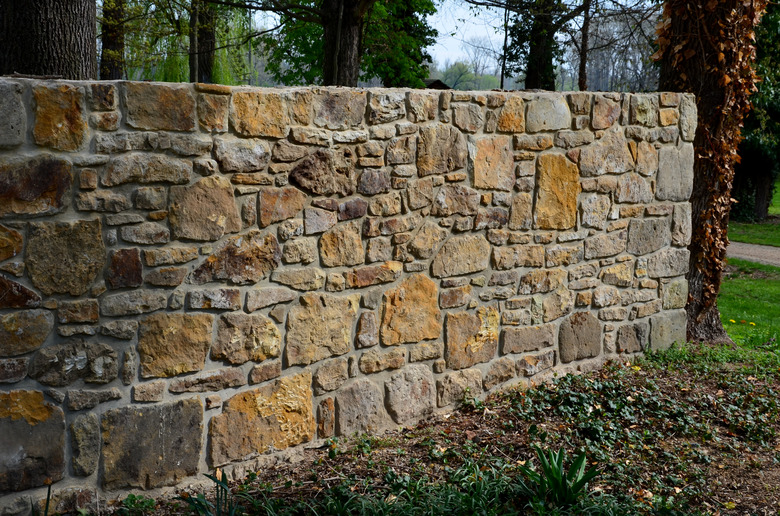What Type Of Mortar Do You Use For A Stacked Rock Wall?
Building a low mortared stone wall in your yard is a doable DIY project for the average homeowner, but it's a big undertaking. The stakes are high (even when the wall is low) because an off-balance or unstable rock wall could collapse at any time. Using the right kind of mortar helps you build a wall that will last for years to come. The two common types used for building stacked rock walls are type N and type S mortar.
About Type N Mortar
All traditional mortar mixes are composed of the same basic components: cement, hydrated lime, and sand. The difference between mortar types all comes down to the ratio of those components.
Typically composed of 1 part cement, 1 part lime, and 6 parts sand, type N mortar has compressive strength of around 750 psi once it has cured for 28 days. It's essentially medium-strength mortar, appropriate for non-load-bearing applications and only to be used above grade (ground level). This is the kind of mortar you'd use to build a brick garden wall or for other bricklaying projects.
Tip
Because mortar is made from components you can buy from your local home improvement store, making your own is always an option. Premade mortar mixes are just easier to use and ensure that you'll get the same consistency with every batch you mix.
About Type S Mortar
Think of type S mortar as the heavy-duty alternative to type N. It's made from 2 parts cement, 1 part lime, and 9 parts sand. Type S mortar has compressive strength of around 1,800 psi at 28 days of curing time. It's appropriate for both above- and below-grade applications and can be used for brickwork and natural stone.
Which Mortar Type Should You Use?
Assuming you're simply building a landscaping wall no more than 3 feet tall (the maximum height you should attempt for a DIY wall-building project), either type of mortar should be fine. Type N is a little thinner and therefore easier to work with. If you're building a wall below grade or in an area with high winds, type S is the better choice for building a really stable wall.
Mixing and Using Mortar
Before you start mixing mortar, put on nitrile gloves and safety glasses to protect your eyes from dust and debris. Mortar can be hand mixed in a wheelbarrow or concrete/mortar mixing tub using a shovel. Alternatively, you can rent a cement/mortar mixer from a home improvement store, although this could get pricey since you'll need it for at least several days as you wait for each layer of mortar to set.
Always pour water into the mixer before adding the mortar. Follow package directions for specific guidance, but you'll need about 5 quarts of water per 80-pound bag of mortar. Mortar must be mixed for at least five minutes, and it's ready to use when a 1/2-inch-thick layer of mortar stays put on a pointing trowel that's held vertically. You may need to add more mortar mix or water to achieve the correct consistency.
Always lay out each new layer of the stacked rock wall before mixing mortar to make sure it's level. Then move the rocks onto the ground next to the wall, apply mortar with your trowel, and set each rock back into its predetermined place. Fill in any gaps between rocks with smaller gravel and/or mortar. Use a piece of scrap wood or a sturdy brush to wipe away excess mortar. Then let the mortar cure for at least 24 hours before building the next level of the wall.
